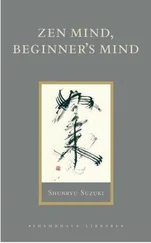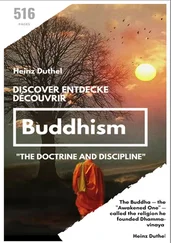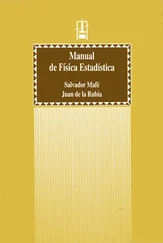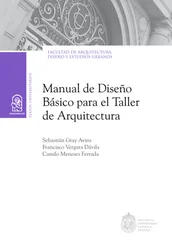Teitaro Suzuki - Manual of Zen Buddhism
Здесь есть возможность читать онлайн «Teitaro Suzuki - Manual of Zen Buddhism» весь текст электронной книги совершенно бесплатно (целиком полную версию без сокращений). В некоторых случаях можно слушать аудио, скачать через торрент в формате fb2 и присутствует краткое содержание. Жанр: Религиоведение, Религия, Руководства, на английском языке. Описание произведения, (предисловие) а так же отзывы посетителей доступны на портале библиотеки ЛибКат.
- Название:Manual of Zen Buddhism
- Автор:
- Жанр:
- Год:неизвестен
- ISBN:нет данных
- Рейтинг книги:3 / 5. Голосов: 1
-
Избранное:Добавить в избранное
- Отзывы:
-
Ваша оценка:
- 60
- 1
- 2
- 3
- 4
- 5
Manual of Zen Buddhism: краткое содержание, описание и аннотация
Предлагаем к чтению аннотацию, описание, краткое содержание или предисловие (зависит от того, что написал сам автор книги «Manual of Zen Buddhism»). Если вы не нашли необходимую информацию о книге — напишите в комментариях, мы постараемся отыскать её.
Manual of Zen Buddhism — читать онлайн бесплатно полную книгу (весь текст) целиком
Ниже представлен текст книги, разбитый по страницам. Система сохранения места последней прочитанной страницы, позволяет с удобством читать онлайн бесплатно книгу «Manual of Zen Buddhism», без необходимости каждый раз заново искать на чём Вы остановились. Поставьте закладку, и сможете в любой момент перейти на страницу, на которой закончили чтение.
Интервал:
Закладка:
The self-nature and the characteristic marks of body, property, and abode evolve when the Alayavijnana is conceived of by the ignorant as grasping and grasped; and then they fall into a dualistic view of existence where they recognize its rise, abiding, and disappearance, cherishing the idea that all things are born and subject to discrimination as to being and non-being. Therefore, Mahamati, you should discipline yourself therein [i.e. in self-realization].
XXIV
Further again, Mahamati, let the Bodhisattva-Mahasattva have a thorough understanding as to the nature of the twofold egolessness. Mahamati, what is this twofold egolessness? [It is the egolessness of persons and the egolessness of things. What is meant by egolessness of persons? It means that] in the collection of the Skandhas, Dhatus, and Ayatanas there is no ego-substance, nor anything belonging to it; the Vijnana is originated by ignorance, deed, and desire, and keeps up its function by grasping objects by means of the sense-organs, such as the eye, etc., and by clinging to them as real; while a world of objects and bodies is manifested owing to the discrimination that takes place in the world which is of Mind itself, that is, in the Alayavijnana.
By reason of the habit-energy stored up by false imagination since beginningless time, this world ( vishaya ) is subject to change and destruction from moment to moment; it is like a river, a seed, a lamp, wind, a cloud; [while the Vijnana itself is] like a monkey who is always restless, like a fly who is ever in search of unclean things and defiled places, like a fire which is never satisfied. Again, it is like a water-drawing wheel or a machine, it [i.e. the Vijnana] goes on rolling the wheel of transmigration, carrying varieties of bodies and forms, resuscitating the dead like the demon Vetala, causing the wooden figures to move about as a magician moves them. Mahamati, a thorough understanding concerning these phenomena is called comprehending the egolessness of persons.
Now, Mahamati, what is meant by the egolessness of things? It is to realize that the Skandhas, Dhatus, and Ayatanas are characterized with the nature of false discrimination. Mahamati, since the Skandhas, Dhatus, and Ayatanas are destitute of an ego-substance, being no more than an aggregation of the Skandhas, and subject to the conditions of mutual origination which are causally bound up with the string of desire and deed; and since thus there is no creating agent in them, Mahamati, the Skandhas are even destitute of the marks of individuality and generality, and the ignorant, owing to their erroneous discrimination, imagine here the multiplicity of phenomena; the wise, however, do not. Recognizing, Mahamati, that all things are devoid of the Citta, Manas, Manovijnana, the five Dharmas, and the [three] Svabhavas, the Bodhisattva-Mahasattva, will well understand what is meant by the egolessness of things.
Again, Mahamati, when the Bodhisattva-Mahasattva has a good understanding as regards the egolessness of things, before long he will attain the first stage [of the Bodhisattvahood], when he gets a definite cognition of the ageless. When a definite acquisition is obtained regarding aspect of the stages [of Bodhisattvahood], the Bodhisattva will experience joy, and, gradually and successively going the scale, will reach the ninth stage where his insight is perfected, and [finally the tenth stage known as] Great Dharma-megha.
Establishing himself here, he will be seated in the great Jewel palace known as “Great Lotus Throne” which is in the shape of a lotus and is adorned with various sorts of jewels and pearls; he will then acquire and complete a world of Maya-nature; surrounded by Bodhisattvas of the same character and anointed like the son of the Cakravarti by the hands of the Buddhas coming from all the Buddha-lands, he will go beyond the last stage of Bodhisattvahood, attain the noble truth of self-realization, and become a Tathagata endowed with the perfect freedom of the Dharmakaya, because of his insight into the egolessness of things. This, Mahamati, is what is meant by the egolessness of all things, and in this you and other Bodhisattva-Mahasattvas should well exercise yourselves.
XXVIII
At that time, Mahamati the Bodhisattva-Mahasattva said this to the Blessed One: Now the Blessed One makes mention of the Tathagata-garbha in the sutras, and verily it is described by you as by nature bright and pure, as primarily unspotted, endowed with the thirty-two marks of excellence, hidden in the body of every being like a gem of great value, which is enwrapped in a dirty garment, enveloped in the garment of the Skandhas, Dhatus, and Ayatanas, and soiled with the dirt of greed, anger, folly, and false imagination, while it is described by the Blessed One to be eternal, permanent, auspicious, and unchangeable. Is not this Tathagata-garbha taught by the Blessed One the same as the ego-substance taught by the philosophers? The ego as taught in the systems of the philosophers is an eternal creator, unqualified, omnipresent, and imperishable.
The Blessed One replied: No, Mahamati, my Tathagata-garbha is not the same as the ego taught by the philosophers; for what the Tathagatas teach is the Tathagata-garbha in the sense, Mahamati, that it is emptiness, reality-limit, Nirvana, being unborn, unqualified, and devoid of will-effort; the reason why the Tathagatas, who are Arhats and Fully-Enlightened Ones, teach the doctrine pointing to the Tathagata-garbha is to make the ignorant cast aside their fear when they listen to the teaching of egolessness and to have them realize the state of non-discrimination and imagelessness.
I also wish, Mahamati, that the Bodhisattva-Mahasattvas of the present and future would not attach themselves to the idea of an ego [imagining it to be a soul]. Mahamati, it is like a potter who manufactures various vessels out of a mass of clay of one sort by his own manual skill and labour combined with a rod, water, and thread, Mahamati, that the Tathagatas preach the egolessness of things which removes all the traces of discrimination by various skilful means issuing from their transcendental wisdom; that is, sometimes by the doctrine of the Tathagata-garbha, sometimes by that of egolessness, and like a potter, by means of various terms, expressions, and synonyms. For this reason, Mahamati, the philosophers' doctrine of an ego-substance is not the same as the teaching of the Tathagata-garbha.
Thus, Mahamati, the doctrine of the Tathagata-garbha is disclosed in order to awaken the philosophers from their clinging to the idea of the ego, so that those minds that have fallen into the views imagining the non-existent ego as real, and also into the notion that the triple emancipation is final, may rapidly be awakened to the state of supreme enlightenment. Accordingly, Mahamati, the Tathagatas who are Arhats and Fully-Enlightened Ones disclose the doctrine of the Tathagata-garbha, which is thus not to be known as identical with the philosopher's notion of an ego-substance.
Therefore, Mahamati, in order to abandon the misconception cherished by the philosophers, you must strive after the teaching of egolessness and the Tathagata-garbha.
XXXV
At that time, Mahamati the Bodhisattva-Mahasattva again said this to the Blessed One:
Pray tell me, Blessed One, about the attainment of self-realization by noble wisdom, which does not belong to the path and the usage of the philosophers;
Which is devoid of [all such predicates as] being and non-being, oneness and otherness, bothness and not-bothness, existence and non-existence, eternity and non-eternity;
Which has nothing to do with the false imagination, nor with individuality and generality; which manifests itself as the truth of highest reality;
Читать дальшеИнтервал:
Закладка:
Похожие книги на «Manual of Zen Buddhism»
Представляем Вашему вниманию похожие книги на «Manual of Zen Buddhism» списком для выбора. Мы отобрали схожую по названию и смыслу литературу в надежде предоставить читателям больше вариантов отыскать новые, интересные, ещё непрочитанные произведения.
Обсуждение, отзывы о книге «Manual of Zen Buddhism» и просто собственные мнения читателей. Оставьте ваши комментарии, напишите, что Вы думаете о произведении, его смысле или главных героях. Укажите что конкретно понравилось, а что нет, и почему Вы так считаете.








